Breathe easy this spring (air purifier guide)

CyberShack’s air purifier guide may be what you need to help you to breathe easy this spring.
Our extensive testing reveals that almost any air purifier does a fine job removing enough dust and pollen; some go several steps further, removing noxious gasses like Formaldehyde, have informative readouts, and fans/heaters for multi-use.
The guide covers:
- What is air quality, and how it impacts respiratory issues?
- Sources of air quality issues in the home – cooking, flatpack, new flooring, circulation
- Why/if you need a purifier
- What are typical room sizes/layouts, and how do these affect purifiers
- The right purifier for the job (CADR, Coandă effect, UV, Ions, HEPA, other)
- Mould Control
- Remote controls, control panel readouts, sensors, Wi-Fi, and apps
- Fan, heat
- Energy Use
- Sound levels
- Maintenance, filter cost, warranty, aftersales support
- Children’s safety
What is air quality, and how it impacts respiratory issues?
The Air Quality index varies from State to State and whether it is a commercial site like AccuWeather (and select region and Air Quality). At a minimum, it covers Ozone (O3), Large Particulate Matter PM10 (<10 μm), Small Particulate Matter PM2.5 (<2.5 μm can be harmful) and Nitrogen Oxide (NO2 can cause respiratory issues). Asthma Australia has an iOS and Android AirSmart App that may help. Beware that most other so-called Air Quality apps are nothing more than Data-harvesters.
The information can help Identify problem days and areas, but it does not show internal air quality.
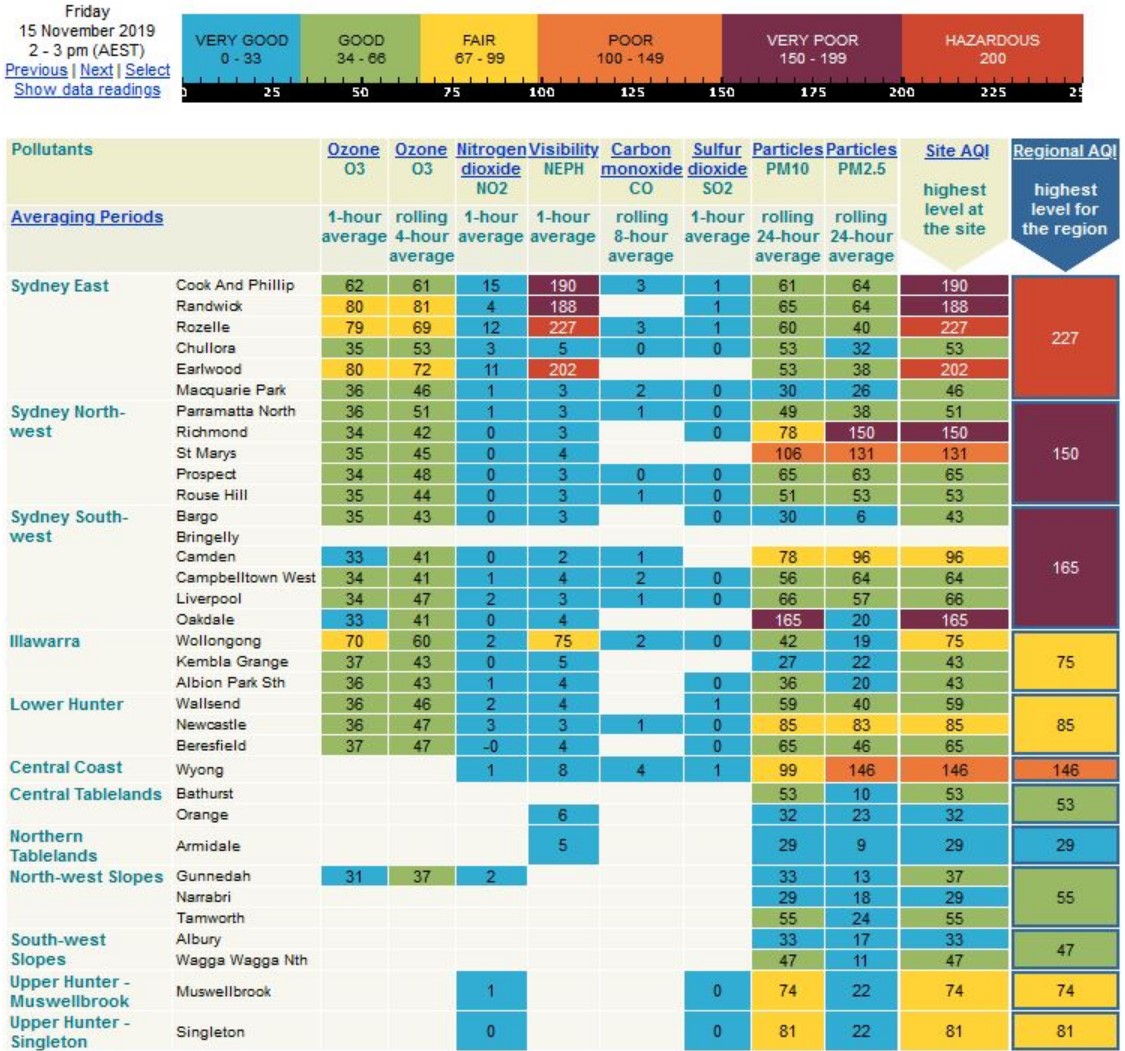

Sources of air quality issues in the home – cooking, flatpack, new flooring, circulation
Internal air quality has never been more important with the proliferation of high-rise apartment living, where most air is recirculated. While Airconditioning may remove some larger particulates, it is not a purifier. The best way to improve internal air quality is to open windows, but all that does is equalise indoor and outdoor air quality. You would not want to do that on smoggy, windy, dusty or smoky days.
The leading causes of poor internal air quality are
- Cooking (without a range hood extractor)
- Smoking
- Wood or gas heaters or fireplaces (Increase carbon monoxide, nitrogen dioxide, Formaldehyde, toxic chemicals and PM2.5 small particulates)
- Flatpack furniture outgases Formaldehyde for months to years
- New synthetic carpets outgas Formaldehyde for months to years (new carpet smell)
- Mould, especially toxic black mould, can cause health issues
- If your neighbourhood has specific pollution problems like near industrial smoke stacks etc.
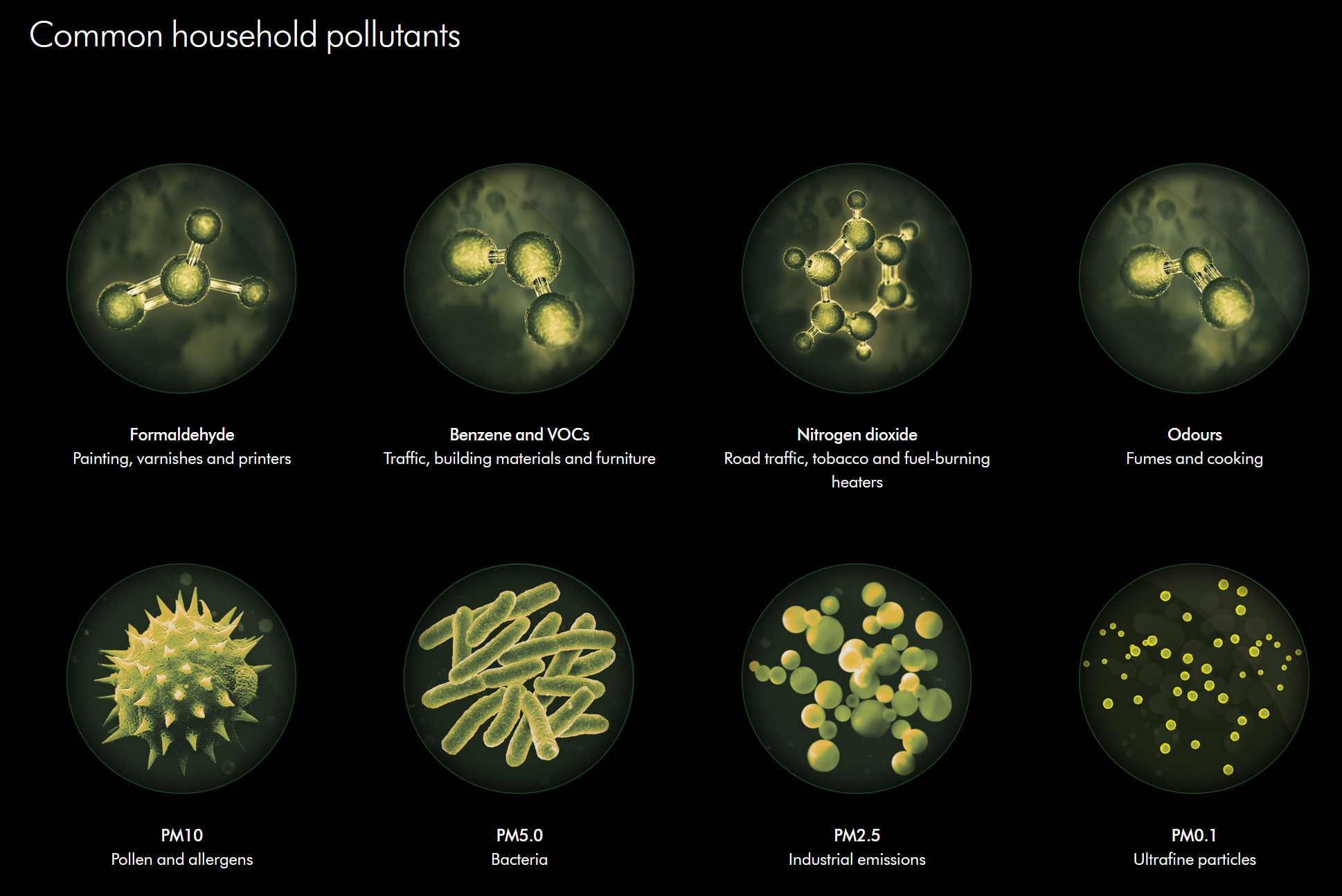
Why/if you need a purifier
Before you scoff that your parents and grandparents never needed one remember that air quality has only become an issue in the past few decades. You can blame part of that on climate change issues, but equally, we have more cars, trucks, high-rise, flat-pack, and air quality ‘influencers’. Hay Fever, Asthma, and respiratory issues have never been at higher levels. Hay Fever starts getting bad in Spring, and is driven by potential bushfires in summer and westerly winds in Autumn.
CyberShack has reviewed many air purifiers over the years and knows that having a few around the home makes a massive difference to internal air quality. Simply put, we stake our reputation on the fact that they remove harmful stuff from the air we breathe, making it easier to sleep, work and play indoors. But they won’t increase the amount of oxygen in the room – only external ventilation can.
What are typical room sizes/layouts, and how do these affect purifiers?
If you want to tow a caravan, you don’t do it with an underpowered car. Equally vital is to calculate the room size (cubic meters, assume a 2.4m ceiling) and layout (door, windows, open space etc.) and match an air purifier’s capacity to that.
- Small room with a door and windows – typically a 3x3m 21.6m3
- Medium room with a door and windows – typically 5 x 5m 60m3
- Large living area still enclosed – typically 10 x 5 125m3
- Large living area open plan with no doors or walls to separate from the remainder of the home – typically 20 x 10m 480m3
Rule #1: Accurately measure the room and types that you want to clean.
The right purifier for the job (CADR, Coandă effect, UV, HEPA, other)
CADR – Clean Air Delivery Rate measured in cubic meterage per hour (m3/hour).
How do you know a room’s cubic meterage? It is a room’s length x depth x ceiling height. We will use the example of a 5 x 5 x 2.4m or 60m3 room.
Layout: Can the room be enclosed (closed doors and windows) – a closed ecosystem? Or if it is more open (like an open plan lounge/dining with perhaps a hallway and stairwell to other levels) – an open ecosystem?
In a closed ecosystem, the great thing is that once the air is then, the job is done until more dirty air is let in (opening a window or door).
You always over-specify CADR capacity in an open ecosystem or use more air purifiers.
Now that you know the room size, you can divide CADR by it to see how many times per hour it will be cleaned.
Rule #2 – CADR indicates how often the room air will be cleaned per hour. Look for two or more times per hour and go for the highest rating you can get (except for Dyson with the Coanda effect).
Coandă effect
Some devices (like Dyson) use the Coandă effect (often called the air multiplier effect) to multiply the volume of air that leaves the purifier. While it does not directly relate to air input and filter cleaning efficiency, it increases room ventilation efficiency. It can turn over the room air faster than a purifier that sucks air in and blows it out through an upwards or forward-facing vent. It uses the POLAR index in the same way that CADR is for typical air purifiers.

Rule #3 – An oscillating fan will move the room air mass around more efficiently but really comes into its own if combined with a fan/heater using the Coandă effect .
UV, Ions and germ killing
Some purifiers have internal UV-C lights as extra filtration.
- UV-C will, with the correct exposure time, inactivate many viruses and bacteria on directly irradiated surfaces. Tests on the SARS-CoV-2 virus (not COVID-19) took an exposure time of 6 seconds.
- UV-C is in the spectrum from 200-280nm (see light spectrum chart below – 254nm used).
- The EPA has found that UV-C can reduce most bacteria by 90-99.9999% under the right conditions.
- The Therapeutic Goods Administration warns that it has not approved any air purifier as a medical device, although it has approved room sterilisation systems with UV-C light.
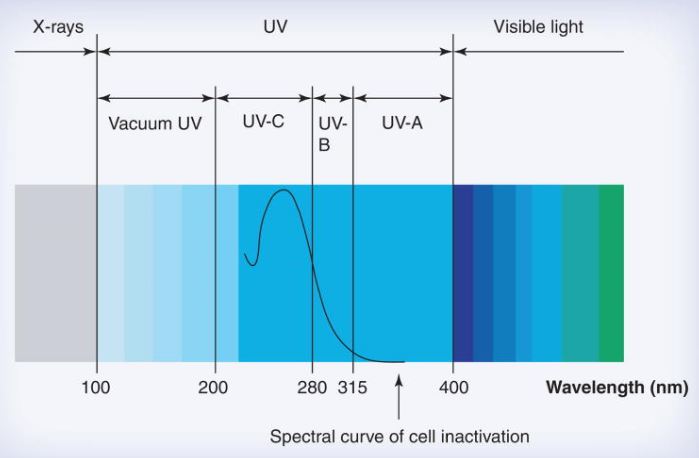


Our take is that as long as no medical claims are made, adding UV-C light to an air purifier cannot hurt and can reduce airborne pathogens. And we doubt that any consumer-grade air purifier kills germs – it may trap some, but that is all.
The jury is out on Ions (charged particles), but as far as we are concerned, this should be in addition to a traditional air purifier.
Rule #4 UV light and Ions are nice but not the main reason to buy a purifier.
Filters – HEPA, Activated Charcoal, paper and more
Typically, the air is drawn in via a fan (suction) through a fine mesh (pre-filter for larger PM10+ particles, then a filter (can range from PM 10 down to 3). It may also pass through an activated charcoal filter to remove common noxious gasses.
All filters have a Particulate Matter Rating (PM) known as MERV rating, but many companies do not publish that. The higher the rating, the better the filter.
To be called HEPA, it must capture 99.97% of particles larger than .3 micrometres (or 3 μm). By the way, hair is typically 70μm. Many filters are not certified HEPA grade.
Remember that PM 2.5 (2.5 μm) can cause issues, and as far as we know, no consumer-grade filter catches all these particles. As these are more like ‘vapours’ than particles, some will be caught attached to larger particles in the activated carbon filter.
And remember that larger particles (over PM10) will simply fall to the ground as dust, and you will still need to clean these manually.
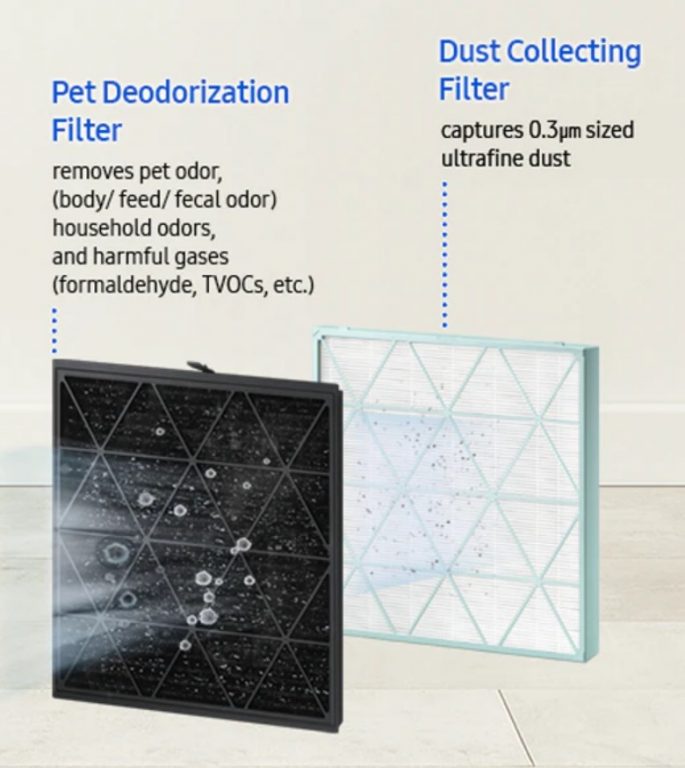
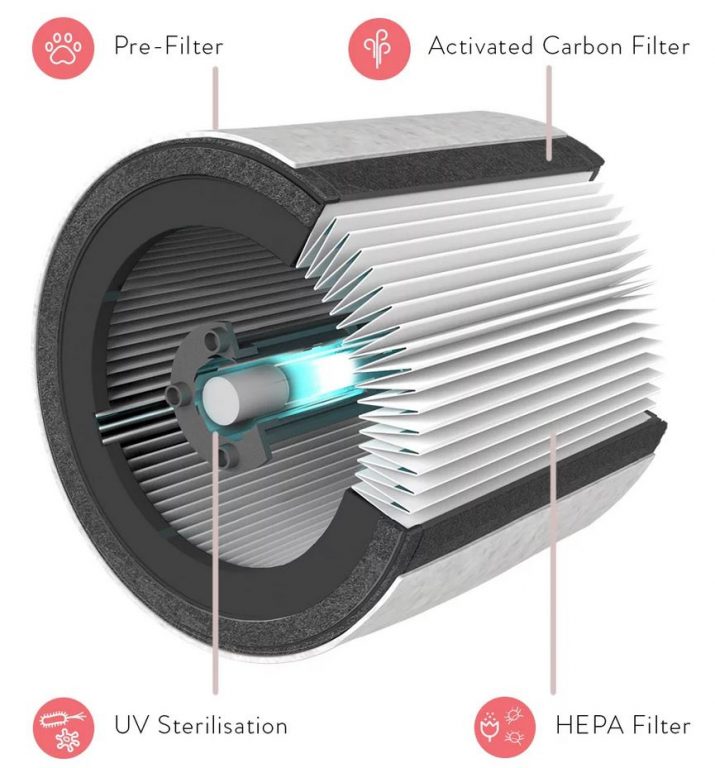

Rule #5 – HEPA filters with a MERV rating of over 13 are best. Avoid filters that make HEPA-like claims without using the word HEPA.
Formaldehyde – a 21st-century issue
The primary source is automotive use, pressed-wood particleboard, plywood, and fibreboard from the urea-based glue used. Not saying the new car smell or the famous IKEA flat-pack is killing us, but you are inhaling Formaldehyde you buy a new car or open a pack. It is also in permanent-press fabrics, paper product coatings, disposable nappies, and insulation materials. In addition, Formaldehyde is also used as an industrial fungicide, germicide, and disinfectant.
It is a 21st-century problem because we live in a flat-pack world, in high–rise apartments with recirculated air conditioning and don’t open windows. If you live in an older home with wide-open windows, you should not have an issue until you install carpet, compressed hardwood or faux wood flooring. On average, Formaldehyde is in the air we breathe at around 0.03ppm (approx. 1/3rd of the Cancer.gov dangerous level).
Dyson has invented two patented technologies.


First is a ‘catalytic converter’ (a catalyst that causes something to happen without being used in the process) that breaks Formaldehyde down to tiny amounts of water (H2O) and carbon dioxide (CO2). It lasts a lifetime because it regenerates during the process.
Second, a solid-state detector to measure mg/m3 – damned hard as formaldehyde gas is 500 times smaller than particles trapped in its HEPA and activated charcoal filters.
CyberShack understands that no other consumer-grade air purifier can remove Formaldehyde (it is gas – not a particle) via HEPA or Activated charcoal filters – any claims otherwise are pure BS.
We quote: No filter-based consumer air purifier can remove Formaldehyde – filters only trap down to 1.0um particles (most only trap to 3um). Carbon filters can trap many chemical gasses (VOCs) but cannot retain Formaldehyde. You must destroy it – break it down into its component elements.
Rule #6 – Formaldehyde is an issue for apartment dwellers and those living in relatively closed environments. For the rest, it is a nice thing to have.
Mould control
Air purifiers do not kill mould. They may trap some mould spores and reduce the spread. What is needed is a dehumidifier that may be part of an air purifier. These trap some water in the air and fill an internal tank that needs emptying when full. An Air conditioner is usually far more efficient at dehumidifying and often has a specific setting to dry the air.
Users often comment that dehumidifiers dry their skin, so make sure you use a moisturiser.
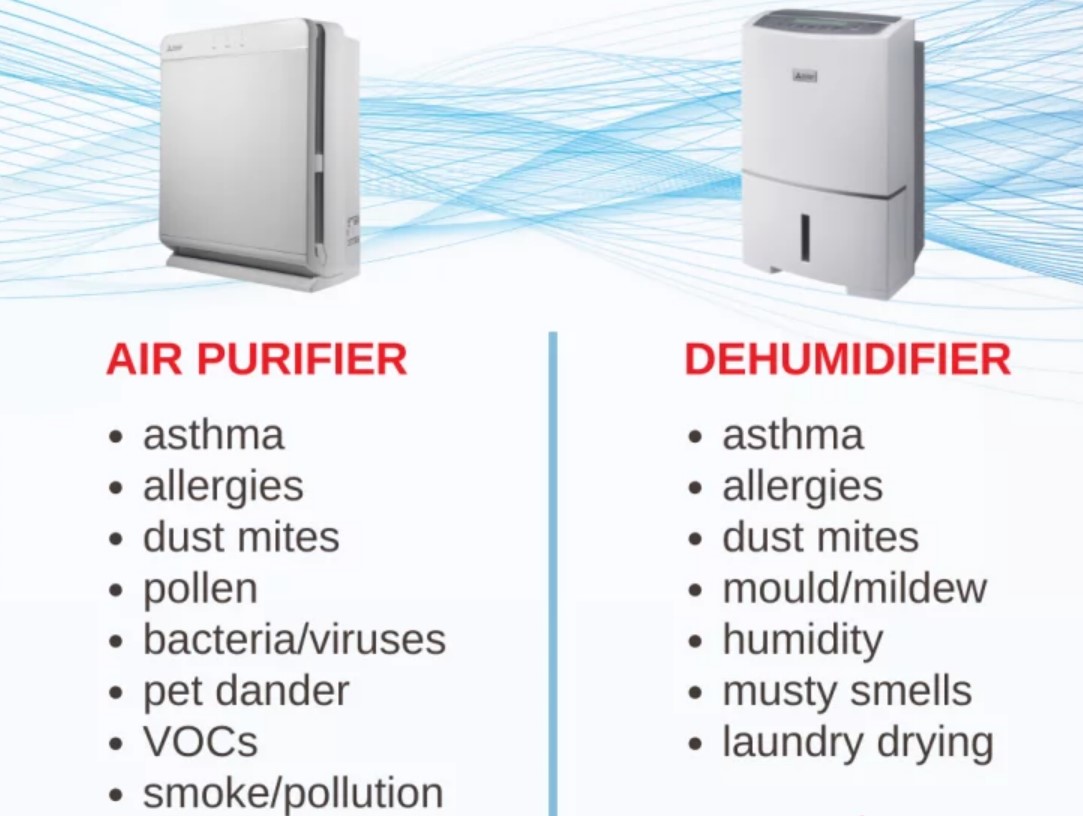
Rule #7 – Mould control is only if the air purifier has a dehumidifier, and you have a mould problem.
Remote controls, control panel readouts, sensors, Wi-Fi and apps
Most air purifiers sit in a corner and do the job. To be effective, they should be left on 24×7. While that means more frequent filter replacement, it also means consistently cleaner air.
A remote control is pretty well useless unless it is an easier way to change purifier settings or measure air quality away from the purifier. The exception is Dyson’s fan/heater purifiers which needs a remote control to operate fan speed, oscillation, and readouts.
Readouts range from Coloured LEDs/rings/bars to detailed O3, COS, VOC and more. A useful feature is the ability to dim any LED readouts at night. Remember that this is more for interest than practicality and is not the reason to buy one brand over another.

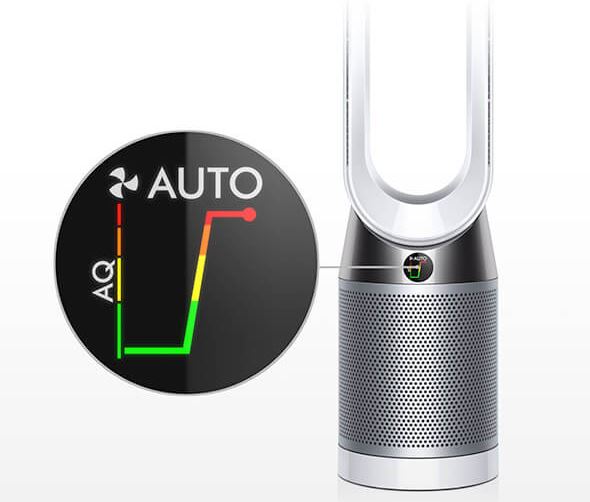
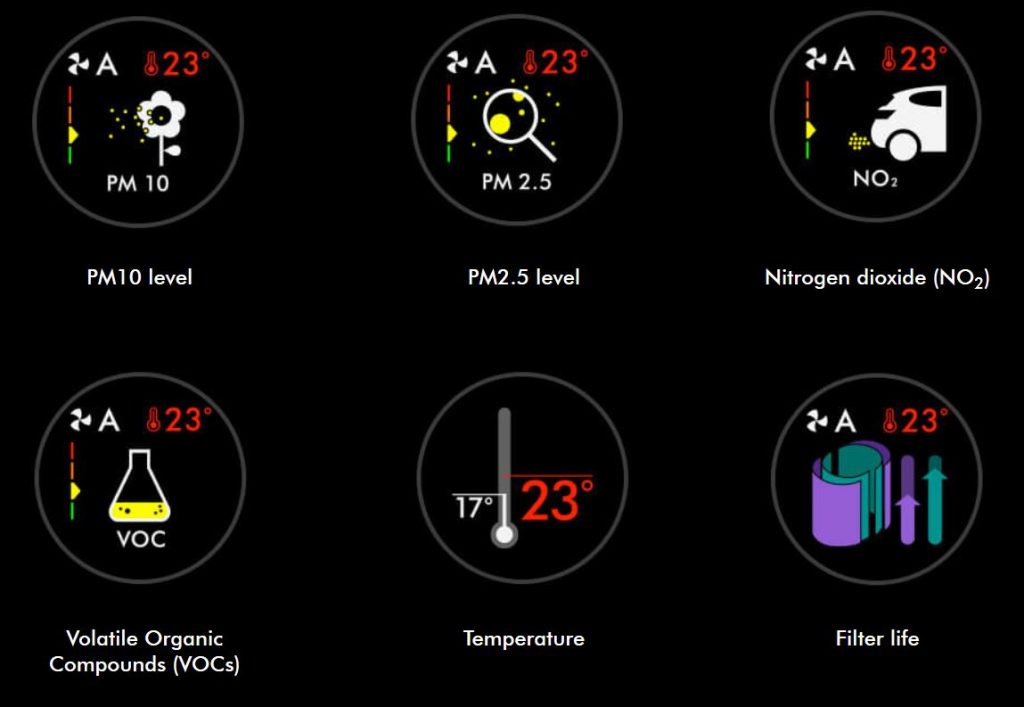
Rule#8 – Don’t be distracted by the frippery unless it is vital to the air purifiers operation
Remote air quality sensors
I like the concept of remote air quality sensors as they can be placed away from the purifier and give a separate reading. But again, this is really of little use as the air purifier will eventually clean the whole room.
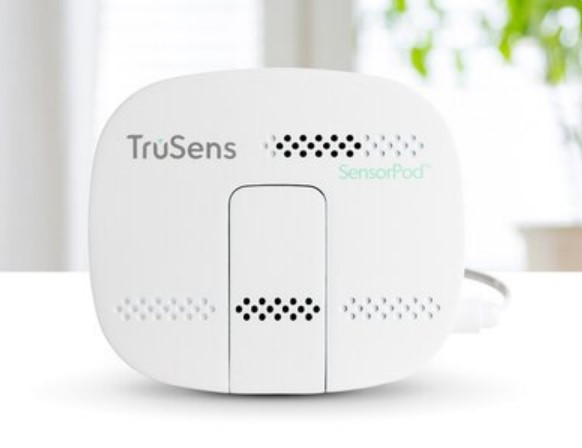
Rule #9 – remote air sensors are nice but don’t really do that much more.
Wi-Fi and Apps
Wi-Fi and Apps are more for interest and perhaps the ability to remotely control a Smarthome. If there is an App, it usually means privacy issues (I trust Dyson not to misuse my information, but many more apps store information on Chinese servers).
Rule #10 – If it needs an App to work, forget it
Fan, heat
The majority of air purifiers are just that. Air comes in, cleaned, and shot out the top. Dyson has a variety of Fan/heat air purifiers that offer more utility at higher prices. They replace stand-alone heaters and fans and do just as good a job. Remember, Dyson was the first to use the Coandă effect and moves up to 10x the amount of air around the room.

Rule #11 – Buying one multi-purpose device is the way to go.
Energy Use
While most use negligible amounts of energy (kilowatt hours), they are really only effective if left on 24×7. Those with an Automatic setting will be the most power efficient.
Rule #12 – most will be energy efficient as straight purifiers. Combo units with heaters will draw more power when heating.
Sound levels
Depending on fan speed, most will range from low 30dB to 70dB. 30-40dB at a mid-range speed is acceptable if it is in the bedroom. If in a lounge area, then 50-60dB is acceptable.
Rule #13 – Quieter the better but expect some noise at full fan speed.
Maintenance, filter cost, warranty, aftersales support
By far, the biggest complaint about generic and no-name air purifiers is that replacement filters become unavailable, rendering the device useless. Many have no after-sales support.
The second biggest complaint is the cost of replacement filters. Most good filters have a 4000-hour life (365 days x 24 hours = 8,760 hours). Cheaper air purifiers have 2000 hours of life.
Remember that you buy an air purifier to clean the air to help you breathe better, and filter replacement costs go with the territory.
For example, Dyson HEPA and Activated Carbon filters cost $99, and while no lifespan is published, the machine measures the efficiency and advises when to replace them. Samsung filters range from $79-249, and the machine advises based on hours used.
Rule #14 – If ongoing cost is an issue, look at the filter replacement costs and life – you may be surprised.
Children’s safety
Toddlers and children can use the filter for support when learning to walk. We test with a 10kg weight to see if the device tips and the purifier’s weight would hurt the child.
Rule #15 – Stability, base size, castors or sliders, fan blade style etc., must be considered.
CyberShack’s view – Air purifiers – many traps for the unwary
Cleaner air is a given from any, but the choice of air purifier can have a more significant impact. The easiest way to use this guide is to select the issues that matter to you and use them as a checklist.
We did not mention purchase price as that is what you pay; value is what you get. All we can suggest is that you set a budget and get the best you can for that.







